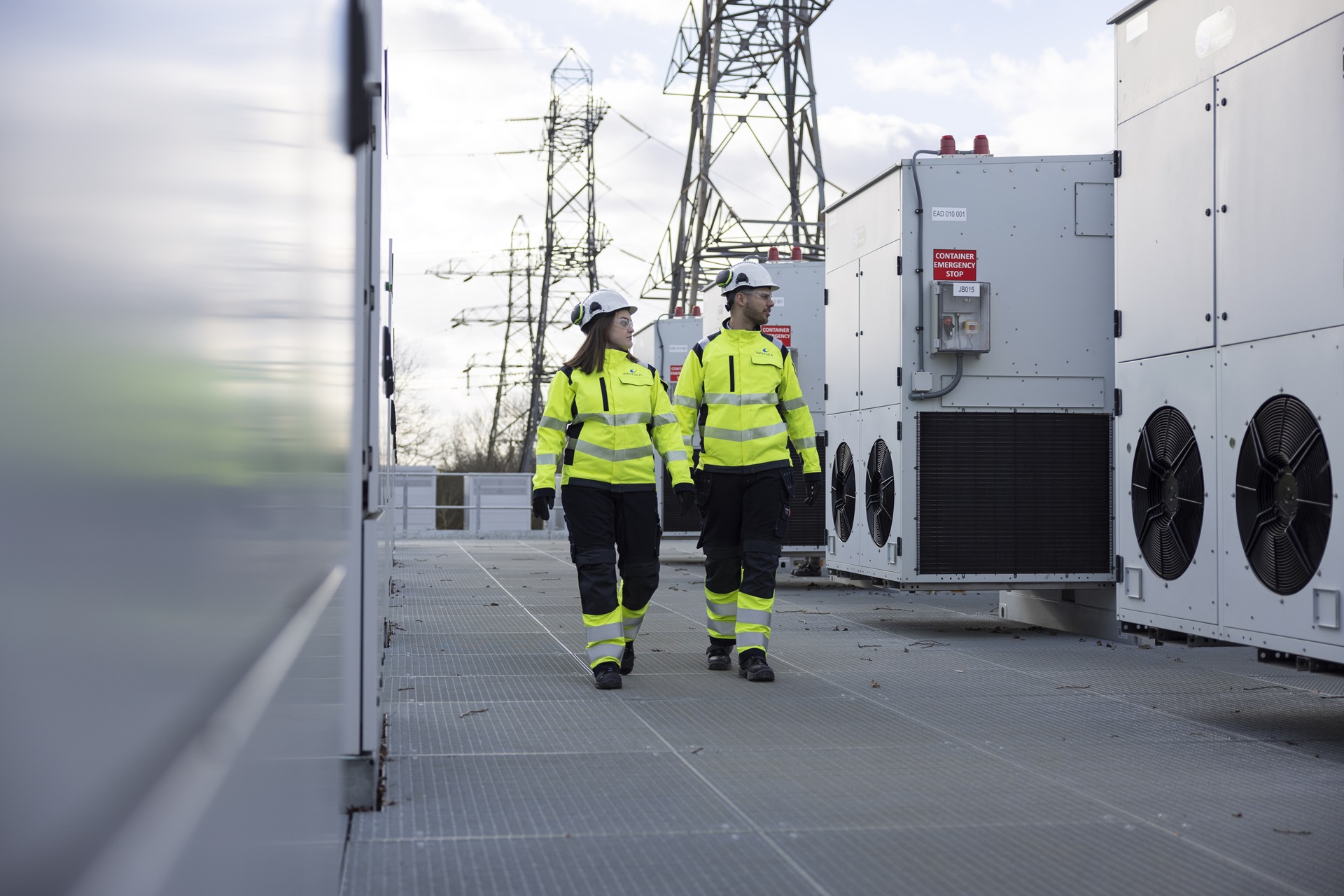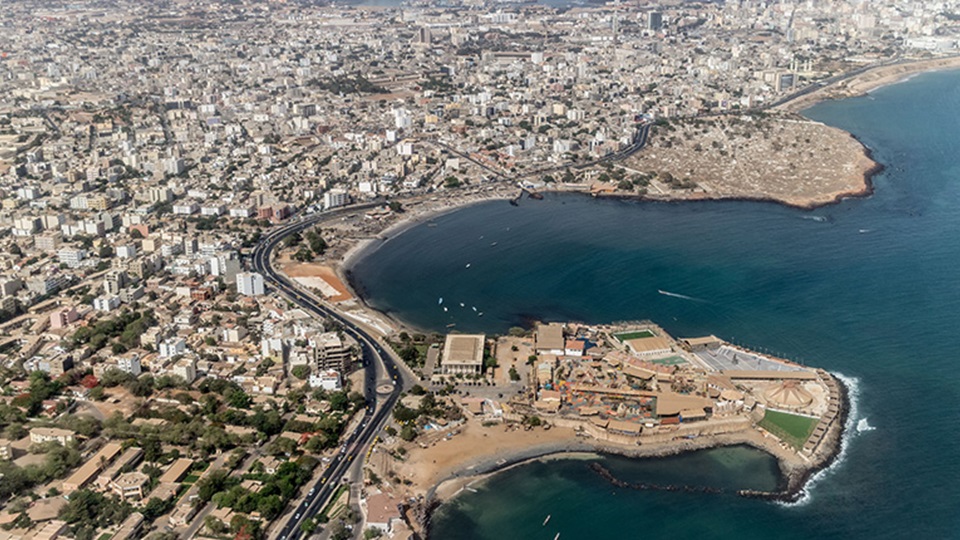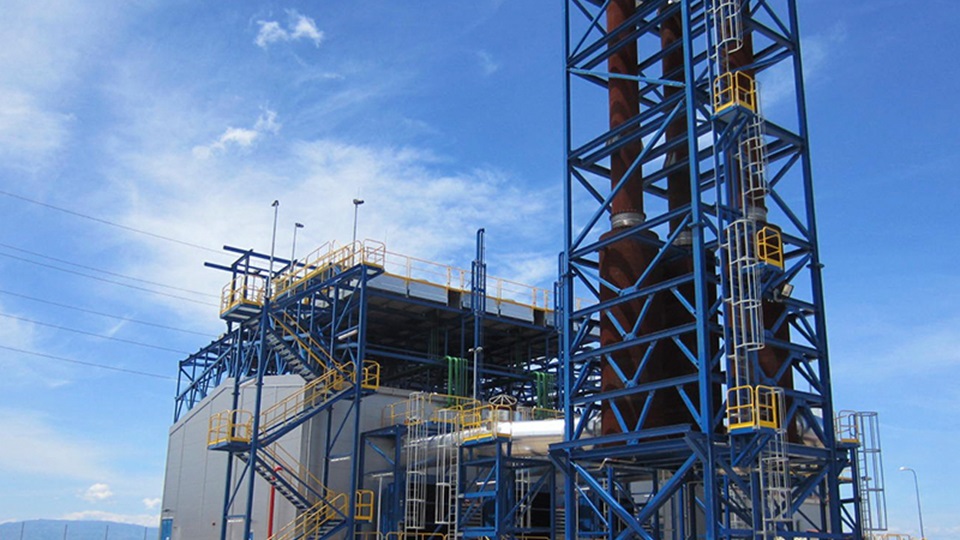
Taking Africa to its Energy Future
Africa is ready to provide enough energy to achieve the most ambitious of goals, and it can do it while maintaining all environmental targets.
We believe careful planning of power systems towards more sustainable and diversified energy supply portfolios can save billions and rapidly reduce CO2 emissions. We create value through our extensive power system knowledge and experience from integrating different generating assets.
On this page, you may find our best materials and proceedings in energising and decarbonising the continent of Africa.
References in Africa
of engine power plant capacity installed
African countries with active customers
Wärtsilä engines installed across the continent
customers across the continent
Wärtsilä's industry firsts in Africa
With more than 650 employees and service hubs located in Kenya, South Africa, Nigeria and Senegal, Wärtsilä is proud to have contributed to many industry firsts. These include Africa’s largest gas engine power plant on the Kribi coast of Cameroon with 216MW capacity, as well as Africa’s highest installation, the 175 MW power plant in Sasolburg, South Africa, sitting at 1,700 meters above sea level.
Another first, the KivuWatt power plant in Rwanda, is the first ever power plant to use the naturally occurring methane from lake Kivu to generate electricity and reduce the environmental risks associated with such high concentrations of gas. Today’s power output is 25 MW but future planned expansions to this project will increase capacity by an additional 75 MW.

Our references from across the continent
Recent Country White Papers
Opinions
Africa related videos
Articles

Recent press releases
District heating: the key to affordable and flexible decarbonised energy, says new study
District heating is a multi-technology solution which is currently underutilised for Europe to meet near-term decarbonisation goals affordably, highlights a new study released by technology group Wärtsilä today. In 2021, district heating supplied just 11% of Europe's households’ heating demand. The study, conducted by economic consulting firm Compass Lexecon, shows that modernising this sector could cut EU carbon emissions and scale renewable energy use significantly by transitioning away from inflexible coal-fired systems.
The findings highlight the significant potential of integrating district heating and power systems (also known as sector coupling) to decarbonise both heat and electricity while delivering savings. Inflexible coal power and heat generation together in 2022 accounted for almost 450 million tons of CO2 emissions – almost 60% of the sector’s emissions.
The study identifies and analyses various revenue streams for combined heat and power generation (particularly CHP engines) using gas and examines relevant European regulatory framework and future trends affecting these revenue streams. It also includes country-specific case studies with insights into national regulatory and market environments.
“District heating has untapped potential in Europe to be a profitable pathway to net zero,” says Igor Petryk, Market Development Director at Wärtsilä Energy. “It is more than just heating homes – it is about enabling renewable energy growth, offering flexibility, and creating a viable solution for coal-dependent countries transitioning to cleaner energy.”
The findings suggest that flexible district heating technologies, such as CHP engines, can contribute to the integration of increasing renewable energy supply and accelerating the phasing out of fossil fuels. In Poland, recently published Wärtsilä’s modelling shows that by integrating district heating and power systems the country could save €3.8 billion over the next decade, reducing annual CO2 emissions in its coal-dominated power sector by 57% by 2032. In the modelling, CHP engines and heat pumps emerge as the key facilitators for efficiently integrating Poland’s expanding Renewable Energy Sources (RES) capacity.
Igor Petryk adds: “Combined heat and power engines and flexible technology like heat pumps optimise energy use. They dynamically select between heat and power production technologies to adapt to market prices, maximising economic returns. For example, when renewable energy is abundant, heat pumps and electric boilers absorb the extra energy. When solar and wind are low, these engines produce heat for cities and power for the grid. This two-way balance keeps energy supply reliable.”
The study further highlights the flexibility of the CHP engine technology compared to traditional gas turbines, allowing it to react more efficiently to fluctuating electricity supply and volatile prices. This advantage has been observed in case studies globally, where flexibilities procured by grid operators need to be made available within only 5 minutes or less. The ability to provide such short-term flexibility can provide a significant revenue stream for CHP engines, thereby reducing heat costs while also improving power system stability.
The case studies in Denmark, Hungary, Czech Republic and Poland, which are all existing district heating projects, confirm that investment into flexible technologies such as CHP Engines is feasible and future-proof. As district heating systems evolve across Europe, the Skagen case study in Denmark shows how CHP engine technology plays a key role even in grids with high renewable generation shares. Meanwhile, Zuglo in Hungary demonstrates the versatility of CHP engines deployed in district heating systems in providing electricity and grid stability.
Government support has been identified as a critical enabler for modernising and decarbonising district heating systems. In the Czech Republic, targeted subsidies aligned with EU goals have sped up CHP engine adoption and boosted investments. In Hungary, the ancillary services market encourages CHP engine investments, supporting greater use of renewables and lowering carbon emissions.
As Europe continues to focus on decarbonising its energy systems, district heating stands out as a robust, flexible multi-technology solution to address both climate change and energy efficiency challenges. While European Union (EU) regulations, such as the Energy Efficiency Directive, set the framework for decarbonisation by promoting the shift to renewable and low-carbon energy sources, national policies and transpositions of EU policy remain crucial in creating the regulatory frameworks that support investments into district heating.
With the right policy frameworks and technology investments, district heating can play a pivotal role in ensuring a sustainable and affordable energy future.
Gerald Aue, Vice President, Compass Lexecon concludes: "Our study shows that efficient CHP engines can play an important role in contributing to the mitigation of climate change by replacing coal. This is also acknowledged by the fact that these engines can fulfil the criteria of the EU Taxonomy for sustainable activities under certain conditions.”
Read more: Decarbonising District Heating
Notes to the editor
What is District Heating?
- District heating is a system that distributes heat generated at a central source, such as a plant or boiler, to multiple buildings through insulated pipes, providing space heating and hot water. It is an efficient and sustainable energy solution, capable of running on renewable energy sources to reduce emissions and improve energy efficiency.
- District heating is unique because it can source heat from a variety of low-carbon and renewable sources, including geothermal, heat pumps, surplus heat from buildings, and industrial waste. This flexibility allows operators to switch to greener power alternatives.
What are CHP Engines?
- Internal Combustion Engine Combined Heat and Power (ICE-CHP or CHP Engines) technology is a system that uses an engine to produce both electricity and heat simultaneously. It efficiently captures the heat produced during electricity generation, which would otherwise be wasted, and repurposes it for heating buildings, water, or industrial processes. This dual output makes it an energy-efficient solution.
Case-studies:
- Denmark (Skagen): Highlights how ICE-CHPs, heat pumps, and electric boilers work together to optimise heat and power generation, as well as balancing operations based on market signals.
- Poland (Grudziądz): Demonstrates how coal-based DH systems can transition to flexible, low-carbon energy portfolios through the integration of heat storage and ICE-CHPs, resulting in significant emissions reductions.
- Hungary (Zuglo): Showcases the versatility of ICE-CHP systems in providing multiple services, from electricity generation to ancillary services, helping to enhance energy resilience and reduce carbon emissions.
- Czech Republic: A subsidy scheme supports investment to natural gas-fired CHP systems, showcasing how effective national policy can accelerate the deployment of technologies replacing coal.
Media contact for more information on this release:
Katri Pehkonen
Communications Manager
Wärtsilä Energy
Mob: +358 50 591 6180
katri.pehkonen@wartsila.com
Image caption: District heating is a multi-technology solution which is currently underutilised for Europe to meet near-term decarbonisation goals affordably, highlights a new study released by technology group Wärtsilä. © Wärtsilä
All Wärtsilä releases are available at www.wartsila.com/media/news-releases and at news.cision.com/wartsila-corporation where also the images can be downloaded. Use of the image(s) is allowed only in connection with the contents of this press release. Wärtsilä images are available at www.wartsila.com/media/image-bank.
Wärtsilä Energy in brief
Wärtsilä Energy is at the forefront of the transition towards a 100% renewable energy future. We help our customers and the power sector to accelerate their decarbonisation journeys through our market-leading technologies and power system expertise. Our solutions include flexible engine power plants, energy storage and optimisation technology, and services for the whole lifecycle of our installations. Our engines are future-proof and can run on sustainable fuels. Our track record comprises 79 GW of power plant capacity, of which 18 GW are under service agreements, and over 125 energy storage systems, in 180 countries around the world.
www.wartsila.com/energy
Wärtsilä in brief
Wärtsilä is a global leader in innovative technologies and lifecycle solutions for the marine and energy markets. We emphasise innovation in sustainable technology and services to help our customers continuously improve environmental and economic performance. Our dedicated and passionate team of 17,800 professionals in more than 280 locations in 79 countries shape the decarbonisation transformation of our industries across the globe. In 2023, Wärtsilä’s net sales totalled EUR 6.0 billion. Wärtsilä is listed on Nasdaq Helsinki.
www.wartsila.com
Africa local offices
South Africa
4 Powerful Street,
Paarden Eiland
7405,
Cape Town
Tel. +27 21 5111 230
Nigeria
Wärtsilä Marine and Power Services Nigeria
23 Oba Akinjobi Street
Ikeja GRA, Lagos
Nigeria
Tel. +234 907 808 0936 - Marine enquiry
+234 8057217049 - New Builds enquiry
+234 708 624 3992 - After Sales enquiry
E-mail: Sales/Services equiries WNG@Wartsila.com
Kenya
ABC Towers - 7A, ABC Place
Waiyaki Way
Nairobi
Tel. +254 20 7602 400 (Pilot)
E-mail: info.wea@wartsila.com
Senegal
Wärtsilä West Africa
Immeuble Le Thiargane 7ème étage, Mermoz Place OMVS
B.P. 21861 Dakar-Ponty, Dakar - Senegal
Tel + 221 33 865 41 00
Fax + 221 33 864 42 72
E-mail: West.africa@wartsila.com
Madagascar
Fort Dauphin (Taolagnaro)
QMM Madena, Fort Dauphin, 614
Madagascar
Tel. +261 20 224 3267
Fax: +261 20 224 3253
Cameroon
Wärtsilä Central Africa
Wärtsilä Base, Essengue
Douala, Cameroon
Tel +237 33 50 54 00
Fax +237 33 50 54 99
wcm@wartsila.com for general information
wcmsales@wartsila.com for commercial issues

























.tmb-448x262.png?Culture=en&sfvrsn=7d8ce645_2)